Ingredient Selection and Measurement
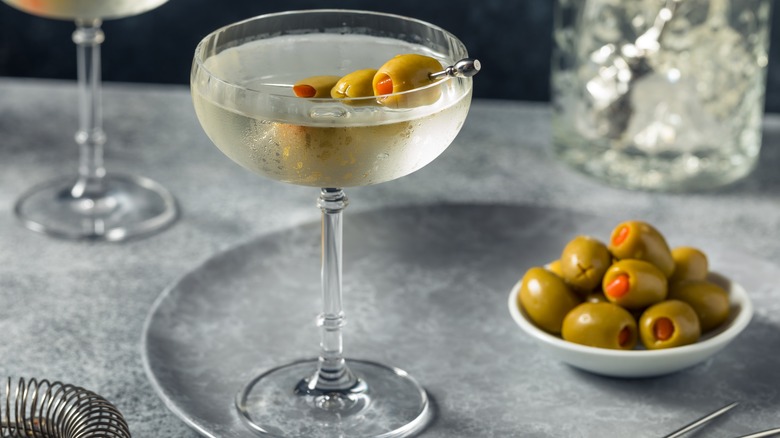
Selecting the right ingredients and measuring them precisely are crucial to crafting a perfect martini. Proper technique ensures a balanced flavor profile and a smooth, satisfying drink. The choice of spirit, vermouth, and the careful measurement of each element contribute significantly to the overall experience.
Careful attention to detail, from the type of gin to the precise amount of vermouth, is essential for achieving the desired outcome. This meticulous approach guarantees a consistent and enjoyable martini experience every time.
Gin or Vodka Selection
Different martini styles benefit from distinct spirits. Dry martinis typically favor gin, while vodka is often preferred for a less pronounced juniper flavor, lending a smoother, more neutral backdrop for the other ingredients. London Dry gin, known for its crisp juniper notes, is an excellent choice for a classic dry martini. For a more subtle, less assertive martini, a Plymouth gin, or a gin with a more botanical profile, may be considered. Vodka, on the other hand, provides a clean, neutral base for a wider range of martini variations, particularly those incorporating unique garnishes or flavored syrups.
Vermouth Selection and Measurement
High-quality vermouth is paramount. It significantly impacts the martini’s flavor and balance. A good vermouth should have a well-defined flavor profile, balanced bitterness, and a smooth texture. The type of vermouth selected directly influences the martini’s style. Dry vermouth is ideal for dry martinis, providing a subtle, herbaceous backbone. Sweet vermouth adds a touch of sweetness, essential for balancing the bitterness of gin or vodka, and is a key component in a French 75, or other cocktails incorporating sweet vermouth. The measurement of vermouth should be precise, as even a slight variation can affect the overall taste.
Measuring Techniques
Precise measurement is critical in cocktail making. Using jiggers, small measuring tools, is the most accurate way to measure the ingredients. Jiggers come in various sizes and enable accurate portioning, leading to consistent results. For example, a standard jigger often features 1.5 oz and 1 oz graduations, facilitating precise measurements. Using a jigger guarantees the appropriate ratio of ingredients, essential for a well-balanced cocktail.
Adjusting Sweetness and Dryness
Adjusting sweetness and dryness levels allows for personalization. For a drier martini, use less sweet vermouth or omit it entirely. A sweeter martini is achieved by adding more sweet vermouth. The ratio of gin or vodka to vermouth dictates the dryness or sweetness of the drink. Experimentation is key, as individual preferences vary. A general guideline is to start with a standard recipe and then adjust the vermouth quantity to suit personal taste preferences.
Mixing Techniques
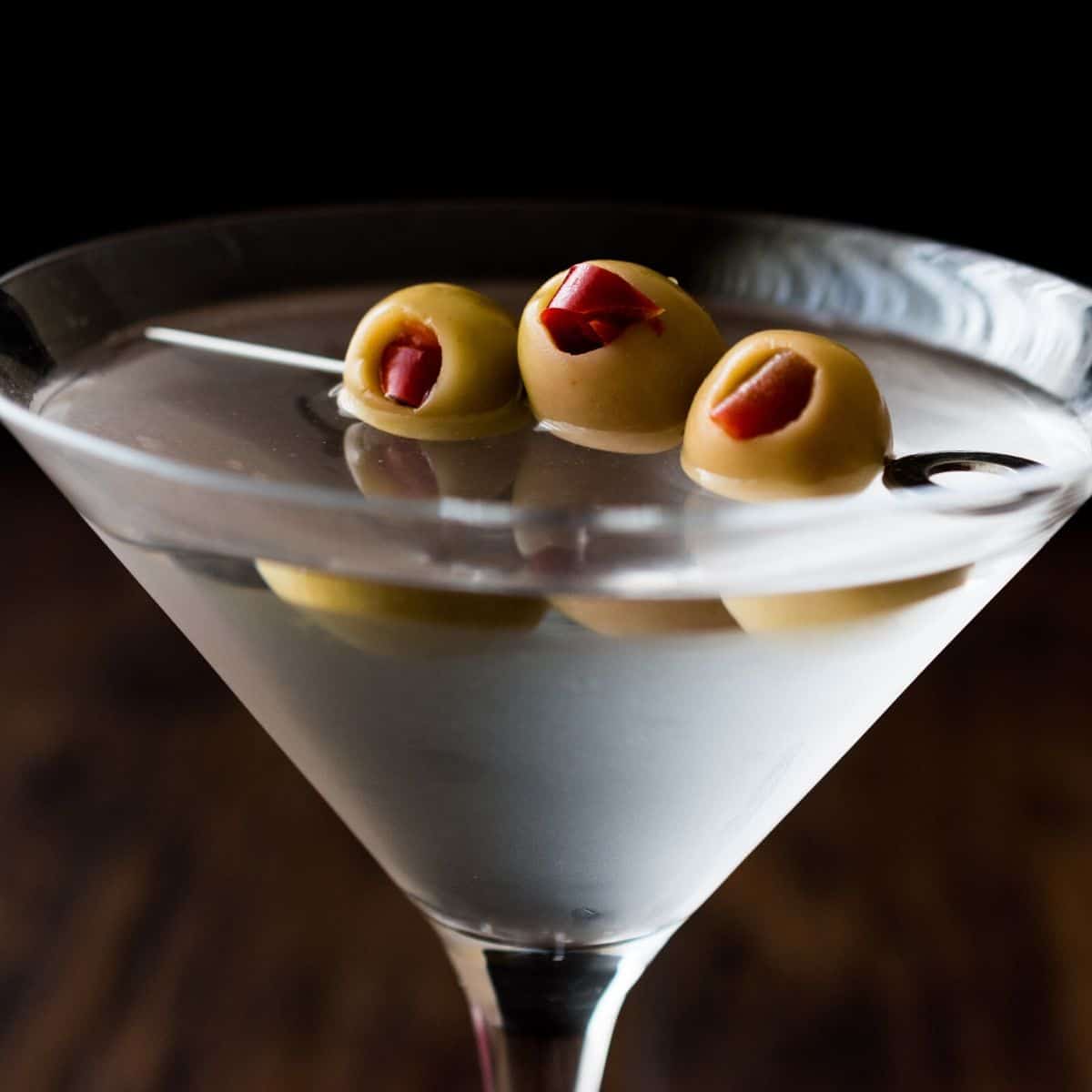
Crafting a perfect martini hinges on the meticulous execution of its mixing process. The chosen method directly impacts the final texture and mouthfeel, impacting the overall drinking experience. Precise handling and careful attention to detail are key to achieving the desired outcome.
The interplay between the ingredients and the mixing technique is paramount in determining the final quality of the cocktail. This section delves into the specifics of shaking and stirring, highlighting the distinctions and their impact on the final product.
Shaking Techniques
Proper shaking is essential for achieving a chilled and well-combined martini. Vigorous shaking incorporates air into the drink, creating a slightly frothy texture. This is a crucial element for some martini variations, particularly those incorporating dry vermouth and gin or vodka.
- The ‘Dry Shake’: A crucial initial step before adding ice, the dry shake is performed by shaking the ingredients without ice. This process helps to chill the drink and combine the flavors thoroughly without diluting them. The action also creates a pre-chilling effect that prevents dilution and over-chilling when ice is added.
- The ‘Wet Shake’: This technique involves adding ice to the shaker before shaking, followed by the ingredients. This process incorporates ice immediately and thoroughly chills the drink. The shaking process incorporates the ice into the cocktail, resulting in a diluted but well-mixed drink. The ice plays a crucial role in chilling the drink and diluting it. The length of shaking influences the dilution and texture of the martini.
Stirring Techniques, How to order a martini
Stirring, on the other hand, is preferred for martinis requiring a smoother, creamier texture. Stirring avoids introducing excess air, which can result in a less refined final product.
- The Technique: Stirring a martini requires a chilled mixing glass, filled with ice, and the ingredients. Slowly and deliberately, stir the mixture until the outside of the glass feels cold to the touch. This cooling process is critical for maintaining the desired temperature and prevents the drink from becoming overly diluted. Avoid over-stirring, as this can lead to a diluted drink and excessive aeration.
- Importance of Cooling: The critical factor in achieving a smooth, creamy texture is the chilling of the cocktail. Using chilled ingredients and a chilled mixing glass ensures the drink retains its intended temperature and avoids unnecessary dilution. Maintaining the correct temperature throughout the mixing process is crucial.
Garnishing Techniques
Garnishing a martini is a critical step in elevating its presentation and enhancing its visual appeal. The choice of garnish depends on personal preference and the specific martini recipe.
- Olive or Lemon Twist: The classic choice for a martini, an olive or lemon twist adds a touch of sophistication. For an olive, gently pierce the olive with a toothpick to ensure stability. For a lemon twist, carefully peel a small segment of lemon, creating a twist and placing it in the drink.
- Other Garnishes: Beyond the classic options, a variety of other garnishes can enhance the visual appeal of a martini. A sprig of fresh herbs, a cherry, or a small edible flower can be used, reflecting the creative flair of the bartender. The garnish chosen should complement the drink’s flavors and add a touch of elegance.
Serving and Presentation

The final steps in crafting a perfect martini involve careful attention to presentation. A well-executed pour and attractive presentation elevate the entire experience, making it more enjoyable and memorable. The choice of glass, the precise method of pouring, and the overall visual appeal contribute to the overall impression of the drink.
The careful selection of the appropriate glass plays a crucial role in the presentation and, to a degree, the flavour experience. The glass shape influences the drink’s aroma and how it’s perceived by the senses. Temperature also plays a critical role, affecting the taste and overall experience.
Martini Glass Types and Use Cases
Different martini glass types are suited to various cocktails and preferences. Understanding the nuances of each glass allows for a more informed choice, ensuring the drink is presented optimally.
| Glass Type | Shape | Use Case | Notes |
|---|---|---|---|
| Coupe | Shallow bowl, rounded sides | Classic martini, for showcasing the drink’s colour and texture. | Excellent for cocktails with a strong emphasis on visual appeal. |
| Martini | Tall, narrow, slightly tapered | Ideal for dry martinis, allowing the drink’s complexity to be appreciated. | Often preferred for its elegance and the emphasis on the drink’s aromas. |
| Nick & Nora | Similar to a martini glass, but slightly wider | Versatile, suitable for both dry and wet martinis. | Offers a balance between visual appeal and drink enjoyment. |
| Champagne Flute | Tall, slender, narrow | Can be used for very specific martinis, emphasizing the visual display. | Not the most common choice for a martini but provides a unique presentation. |
Chilling Ingredients and Glassware
Chilling the ingredients and glassware is essential for maintaining the desired temperature and enhancing the flavour experience. Proper chilling ensures the drink’s components are at their optimal temperature, preventing dilution or unwanted flavour alterations.
Proper chilling ensures the drink’s components are at their optimal temperature.
The coldness of the drink affects the flavours and aroma. Chilling the martini glass in the freezer ensures a consistent temperature, enhancing the flavour profile.
Correct Pouring Technique
A precise pouring technique is vital for maintaining the integrity of the drink and its presentation. A controlled pour avoids spills and ensures the drink is accurately measured.
A controlled pour avoids spills and ensures the drink is accurately measured.
Pour the ingredients into the chilled glass, ensuring the drink is at the correct level. Avoid overfilling the glass.
Visual Presentation
A visually appealing presentation enhances the overall experience of a martini. The arrangement of garnishes and the overall aesthetic contribute to the overall enjoyment.
A visually appealing presentation enhances the overall experience of a martini.
Garnish the martini with an olive or lemon twist, strategically placed to complement the drink’s appearance. A neat presentation adds to the overall enjoyment.
Variations and Alternatives: How To Order A Martini
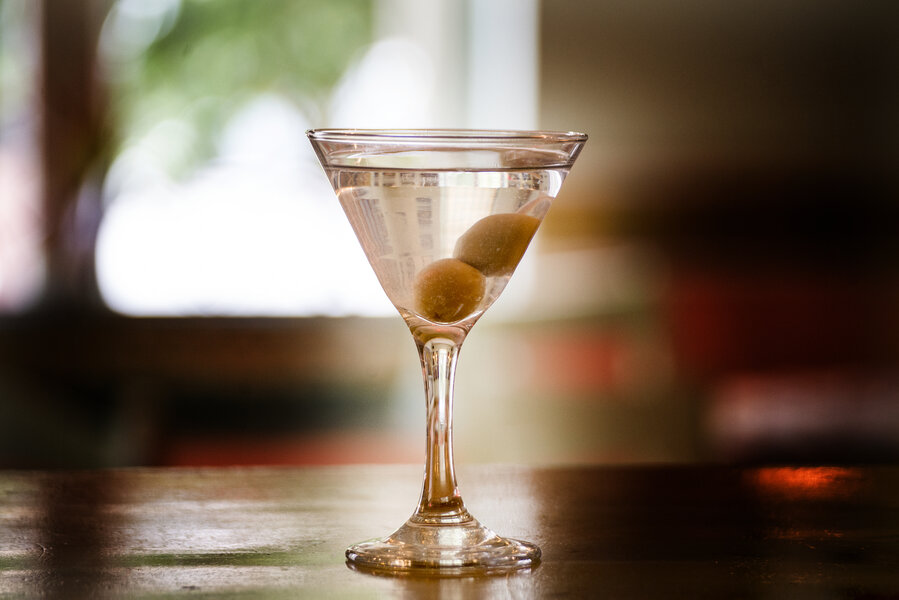
The martini, while a classic, lends itself to numerous variations. These alternatives offer a spectrum of flavors and experiences, appealing to different tastes and dietary needs. Exploring these variations can enhance the enjoyment of this iconic cocktail.
Common Martini Variations
A variety of ingredients and techniques can transform the basic martini recipe. Understanding these variations allows for a personalized experience.
- Dirty Martini: This variation introduces olive brine to the mix, imparting a savory depth. The addition of brine alters the cocktail’s flavor profile and texture.
- Gibson: A twist on the traditional martini, the Gibson substitutes a cocktail onion for the olive. This substitution creates a distinct flavor profile that emphasizes the onion’s savory characteristics.
- Cosmopolitan: While technically not a martini, it shares the cocktail’s base structure with a prominent citrus and berry flavor. The Cosmopolitan, featuring cranberry juice, triple sec, and Cointreau, offers a more fruity alternative.
- French 75: A sparkling wine cocktail that combines gin, lemon juice, and sugar. The addition of Champagne or other sparkling wine elevates the cocktail to a celebratory experience.
Preparing a Dirty Martini
The dirty martini adds a unique layer of complexity. The key lies in the appropriate use of olive brine.
How to order a martini – To prepare a dirty martini, follow these steps:
- Chill a cocktail shaker and the martini glass. This ensures the cocktail maintains its desired temperature.
- Combine gin, vermouth (optional), and a few dashes of olive brine in the chilled shaker. The amount of olive brine depends on personal preference, ranging from a light coating to a more substantial infusion of flavor.
- Add ice to the shaker and shake vigorously for 15-20 seconds until well chilled. This ensures the cocktail achieves its desired chill.
- Strain the mixture into the chilled martini glass.
- Garnish with a twist of lemon or a green olive. This final step adds the finishing touch to the drink, balancing the flavors and enhancing the visual appeal.
Preparing a French 75
The French 75 showcases the elegance of Champagne. The method for preparing a French 75 differs from the standard martini procedure.
For a French 75, follow this process:
- Chill a cocktail shaker and a champagne flute.
- Combine gin, lemon juice, and sugar in the chilled shaker. Stir well until the sugar dissolves. This ensures the cocktail is thoroughly mixed and that the sweetness is balanced with the other ingredients.
- Add ice to the shaker and shake vigorously for 15-20 seconds.
- Strain the mixture into the chilled champagne flute.
- Top with Champagne or other sparkling wine. Carefully pour the sparkling wine over the mixture to maintain the drink’s elegance.
- Garnish with a lemon twist.
Ingredient Substitutions
Adapting the martini recipe to dietary restrictions or preferences is straightforward.
Various ingredients can be swapped to suit individual needs. For instance, replacing gin with vodka creates a vodka martini. For those avoiding alcohol, a non-alcoholic version can be crafted by substituting the alcoholic ingredients with their non-alcoholic counterparts.
- Dairy-free: Substitute milk or cream with plant-based alternatives.
- Gluten-free: Select vermouth varieties explicitly labeled as gluten-free.
- Low-sugar: Reduce the amount of sugar or use a sugar substitute.
Troubleshooting Common Issues
Crafting a perfect martini involves more than just the ingredients. Attention to detail and understanding potential pitfalls are key to achieving a consistently satisfying result. This section will address common problems encountered during martini preparation, providing solutions and strategies for achieving optimal flavor and texture.
A crucial aspect of troubleshooting is recognizing that every martini is a unique experience. The balance of ingredients, individual preferences, and even the quality of the spirits can influence the final outcome. A nuanced approach to problem-solving is essential, allowing for adjustments based on the specific characteristics of each drink.
Identifying and Correcting Flavor Imbalances
Understanding the relationship between gin or vodka, vermouth, and garnishes is crucial for achieving a well-balanced martini. A significant discrepancy in these elements can lead to a drink that is overly sweet, bitter, or lacking in complexity. Adjusting the proportions of vermouth or adding a splash of a complementary liqueur can often resolve such issues. For instance, a martini that’s too dry might benefit from a slight increase in vermouth, while one that’s too sweet could use a reduction in vermouth. Adding a dash of bitters can also enhance complexity and balance flavors.
Addressing Textural Issues
The texture of a martini should be smooth and velvety, not gritty or overly thick. Problems often stem from improper shaking or insufficient chilling of the ingredients. Insufficient chilling will result in a diluted, less refreshing drink. To achieve the desired texture, ensure all ingredients are thoroughly chilled before mixing. A proper shake, not just a stir, is vital for creating a smooth and emulsified texture. Excessive shaking, however, can lead to an overly diluted drink or a cloudy appearance. A gentle, controlled shaking is key.
Adjusting Sweetness and Dryness
The sweetness and dryness of a martini are largely determined by the type and amount of vermouth used. A dry martini uses a small amount of vermouth, while a wet martini features a larger proportion. A dry martini is typically more intense in flavor, while a wet martini is milder. If a martini is too sweet, a reduction in vermouth is often necessary. Conversely, a dry martini may need a touch more vermouth to achieve the desired balance. Experimentation with different vermouth types can also lead to unique and interesting flavor profiles.
Troubleshooting Issues with Gin or Vodka
The quality of the gin or vodka used plays a significant role in the overall martini experience. Using subpar alcohol can result in a less refined and less complex flavor. If the spirit lacks a clear, distinct flavor, it can be difficult to balance with other ingredients. Prioritize using high-quality, well-aged spirits for a truly exceptional martini.
Troubleshooting Garnish Issues
The garnish is a critical aspect of presentation and flavor. An improperly chosen garnish can detract from the overall experience. The wrong garnish can introduce undesirable flavors, affecting the balance of the drink. Using a suitable garnish, such as a lemon twist, olive, or a brandied cherry, is key to completing the cocktail experience.
Garnishes and Presentation
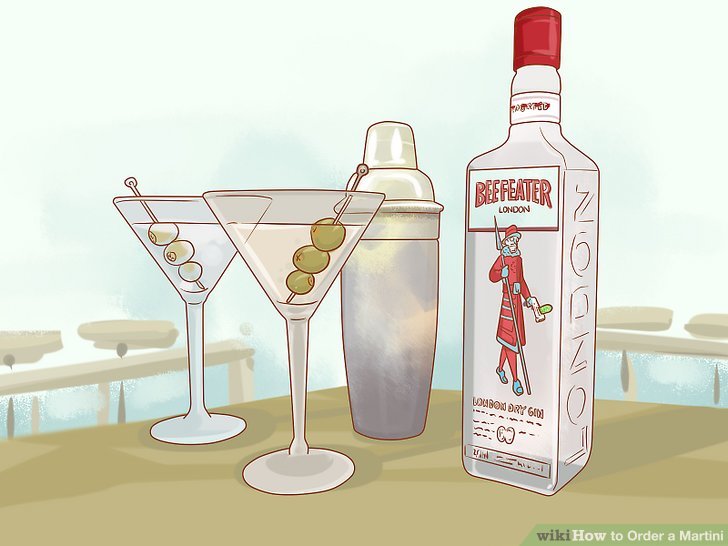
The selection and presentation of garnishes play a crucial role in elevating the martini experience beyond simply a delicious drink. A well-chosen garnish not only enhances the visual appeal but also adds a touch of sophistication and artistry, making the drink a true piece of crafted hospitality. Proper presentation complements the taste and texture of the martini, making it a more memorable experience.
Garnish Selection
A well-chosen garnish complements the martini’s flavor profile and adds an aesthetic dimension. The selection should be appropriate to the specific martini recipe and the desired overall impression. A crucial element is considering the drink’s ingredients and flavor combinations.
| Garnish | Visual Appeal | Description |
|---|---|---|
| Olive | Classic, understated elegance | A classic choice for a dry martini, the olive’s salty, briny flavor complements the dryness. A simple, whole olive is often the best choice. |
| Lemon twist | Fresh, zesty appeal | A bright, citrusy twist adds a refreshing touch to a martini, particularly those with citrus or herbal notes. A delicate twist of the peel is often preferable. |
| Orange peel | Sweet and citrusy | For martinis with orange or other citrus-forward flavors, an orange peel adds a touch of sweetness and a vibrant visual. The peel is often expressed over the drink to release its aroma. |
| Cherry | Sweet and festive | A sweet cherry, especially a maraschino cherry, is a popular choice for sweeter martinis or those with a touch of sweetness. A whole cherry is often presented. |
| Cocktail onion | Unique and savory | Adds a distinctive, pungent savory element, especially in combination with vermouth. A whole, thinly sliced cocktail onion is often used. |
Garnish Application
Proper application of the garnish is critical to the overall presentation.
- For olives, carefully place the olive on the rim of the martini glass, ensuring it is not submerged.
- A lemon or orange twist is best applied by gently twisting the peel over the rim of the glass, then releasing the peel to reveal its aroma. Avoid overly aggressive twisting, which can lead to excessive juice.
- A cherry should be placed in the martini glass, slightly off-center. For a presentation with a slightly different visual, the cherry can be suspended above the drink, using a toothpick to attach it to the edge of the glass.
- Cocktail onions can be placed on the edge of the glass, or carefully placed into the drink, with the sliced side exposed for a presentation highlighting the onion’s distinct flavor.
Presentation Methods
The presentation method significantly influences the overall impression.
- Martini Glass: The classic presentation for a martini. The long, slender shape of the glass accentuates the drink’s visual appeal. A garnish should be selected and applied with consideration for the shape and size of the glass.
- Rocks Glass: A less formal presentation, suitable for martinis served on the rocks. A garnish should be chosen that complements the presentation of the drink, and the amount of ice in the glass.
Significance of Garnishes
Garnishes enhance the overall experience by providing visual appeal, flavor enhancement, and a sense of artistry. They transform a simple drink into a more sophisticated and memorable experience. The visual impact of the garnish adds a touch of sophistication to the drink, drawing attention to the quality of preparation and attention to detail.
Illustrative Examples
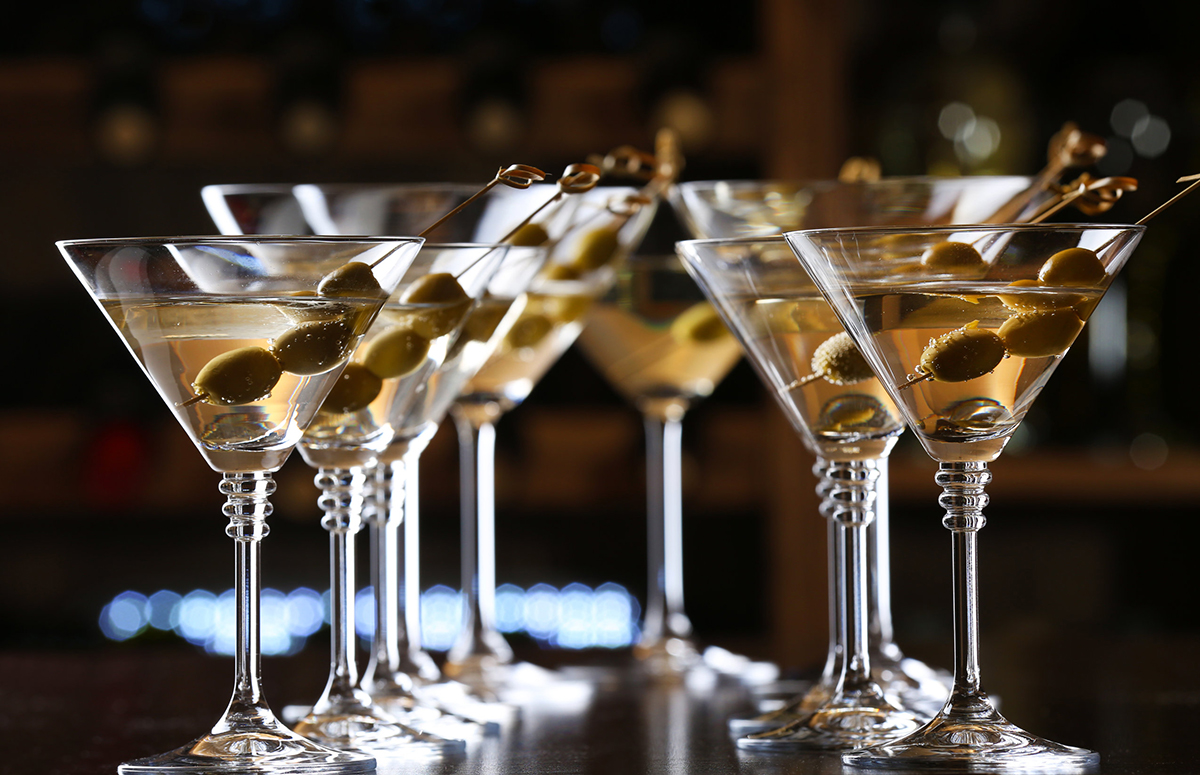
A visual understanding of martini preparation significantly enhances the experience for both the bartender and the patron. The visual presentation of a well-crafted martini, from the glass to the garnish, speaks volumes about the quality and attention to detail. Different martini variations call for specific glass types and garnishes, which can also subtly affect the flavor profile.
Martini Types and Glassware
Different martini types, such as the classic Dry Martini, the Vesper, and the French 75, each necessitate specific glassware. The selection of glassware is crucial, influencing the martini’s overall presentation and experience.
- Dry Martini: A classic Dry Martini is best served in a chilled, stemmed cocktail glass, often a coupe or a martini glass. The shape of the glass concentrates aromas and allows for a smooth sipping experience. The stemmed design facilitates easy handling and appreciation of the visual presentation. The coupe glass, with its wide bowl, enhances the experience by allowing for more visual appreciation of the liquid’s color and clarity.
- Vesper: The Vesper martini, a more complex concoction, is typically served in a slightly larger, taller martini glass than a standard Dry Martini. The increased volume of the glass allows for a more robust presentation of the ingredients and a more balanced taste experience.
- French 75: The French 75, a spritzer-style martini, demands a slightly taller, narrower cocktail glass, often a highball glass. The shape of the glass allows for the full appreciation of the layering of the spirit, liqueur, and citrus elements.
Garnishes and Presentation
The garnish, a seemingly small detail, dramatically enhances the visual appeal and, in some cases, the taste profile of a martini. The choice of garnish is closely tied to the recipe and the overall aesthetic of the drink.
- Olive: A classic Dry Martini often features a green olive. The olive is presented by resting it on the rim of the glass or skewered on a cocktail pick. A meticulously placed olive, whether whole or halved, adds a touch of elegance. A presentation tip is to use high-quality, fresh olives for the best visual and taste appeal.
- Lemon Twist: A lemon twist, frequently used in various martini recipes, adds a refreshing citrus aroma and flavor. The twist is held in place above the cocktail’s surface, or it is pressed against the edge of the glass and then gently removed, leaving a fragrant trail of citrus oil on the rim.
- Orange Peel: An orange peel adds a more pronounced citrus note. The peel is often presented as a spiral or a small segment, nestled near the rim of the glass or on a cocktail pick.
Pouring Techniques
The proper pouring technique for a martini significantly impacts the quality of the final product. It ensures an even distribution of ingredients and maintains the integrity of the drink.
- Precision Pouring: For a precise pour, use a jigger to measure the ingredients accurately. The correct ratio of ingredients is key to a well-balanced martini. Ensure the pour is smooth and controlled to prevent dilution or over-filling of the glass.
- Ice Handling: Use ice carefully. Adding ice to the shaker, and then straining into the glass, is the most common method. This technique ensures that the drink maintains its temperature and the ice doesn’t dilute the cocktail too quickly.
Helpful Answers
What are the different types of martinis?
Martini variations include dry, dirty, French 75, and more, each with unique ingredient combinations and flavor profiles.
What kind of gin or vodka is best for a martini?
The best spirit choice depends on the desired martini style. Consider using high-quality gin or vodka that complements the other ingredients.
How do I adjust the sweetness and dryness of a martini?
Adjusting sweetness and dryness involves varying the amount of vermouth. Less vermouth results in a drier martini, and more vermouth increases sweetness.
What are some common mistakes when making martinis?
Common mistakes include using subpar ingredients, improper mixing techniques, and neglecting the importance of chilling.
What garnishes are suitable for a martini?
Various garnishes, like olives, lemon twists, or cocktail onions, can complement the martini’s flavor profile and enhance its visual appeal.